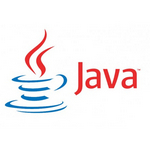java与又拍云图像处理接口对接实战详解
导言:图像处理是现如今互联网应用中非常常见和重要的功能需求,通过对图像的处理可以提升用户体验和增强应用的功能。而又拍云是一个提供强大的图像处理服务的云平台,通过对又拍云的图像处理接口进行对接,可以快速实现各种图像处理操作。本文将以Java语言为例,详细介绍如何使用Java编程语言与又拍云图像处理接口对接并进行实际应用。
一、准备工作
在开始对接之前,需要先准备以下内容:
二、创建Java项目及导入依赖
立即学习“Java免费学习笔记(深入)”;
在IDE中导入又拍云Java SDK库文件,具体方法如下(以Eclipse为例):
a. 右键单击项目,选择"Build Path" -> "Configure Build Path"。
b. 在弹出的对话框中,选择"Libraries"页签。
c. 单击"Add JARs"或"Add External JARs"按钮,然后选择刚刚复制到"lib"文件夹下的jar包,点击确定。
d. 确保库文件成功导入后,点击"Apply"和"OK"按钮。
三、编写代码
import com.yupoo.upyun.UPYun;
import com.yupoo.upyun.UPYunException;
import com.yupoo.upyun.UpYunUtils;
import com.yupoo.upyun.methods.Params;
import com.yupoo.upyun.methods.Process;
public class ImageProcessingDemo {
// 又拍云图像处理的空间名、操作名和操作参数
private static String BUCKET = "your_bucket";
private static String SPACE = "your_space";
private static String OPERATION_NAME = "your_operation_name";
private static String OPERATION_PARAMS = "your_operation_params";
public static void main(String[] args) {
// 创建又拍云对象
UPYun upyun = new UPYun(BUCKET, SPACE);
try {
// 需要进行图像处理的文件路径(包含文件名和扩展名)
String filePath = "/path/to/your/file.jpg";
// 构造图像处理参数
Params params = new Params.Builder()
.add(Params.Param.X_GMKERL_TYPE.getValue(), OPERATION_NAME)
.add(Params.Param.X_GMKERL_VALUE.getValue(), OPERATION_PARAMS)
.build();
// 进行图像处理
Process.process(upyun, filePath, params);
// 获取处理后的图片URL
String processedImageUrl = UpYunUtils.getImageUrl(BUCKET, filePath);
// 打印处理后的图片URL
System.out.println("Processed image URL: " + processedImageUrl);
} catch (UPYunException e) {
e.printStackTrace();
}
}
}注:上述代码使用了又拍云提供的Java SDK,通过该SDK可以方便地与又拍云的图像处理接口进行对接。
结语:本文介绍了Java与又拍云图像处理接口的对接方法,并给出了使用Java语言实现图像处理的代码示例。读者可以根据自己的实际需求,在此基础上进行扩展和定制,实现更丰富和个性化的图像处理功能。希望本文能对读者理解和应用又拍云图像处理接口有所帮助。
以上就是Java与又拍云图像处理接口对接实战详解的详细内容,更多请关注php中文网其它相关文章!

java怎么学习?java怎么入门?java在哪学?java怎么学才快?不用担心,这里为大家提供了java速学教程(入门到精通),有需要的小伙伴保存下载就能学习啦!

Copyright 2014-2025 https://www.php.cn/ All Rights Reserved | php.cn | 湘ICP备2023035733号